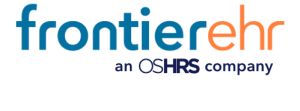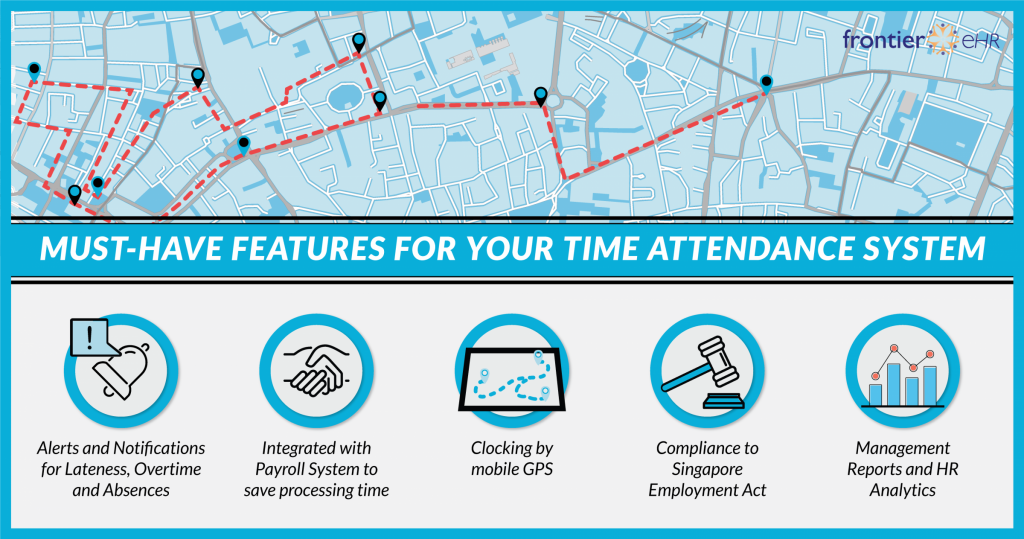9 Must-Have Features of Your Time Attendance System
With the latest initiative from Singapore Government to encourage SMEs to go digital, it’s clear that the adoption of automated processes into an organisation’s HR department has become increasingly important. Time and attendance is one area that is often ignored by businesses that only focus on maximising external growth, leaving the workforce underdeveloped. An outdated system can be difficult to use and lack the wide range of features that newer systems have. A system’s inflexibility can have a negative impact on the company’s future opportunities for growth as well as it’s current bottom line. True growth happens for businesses that are lead by executives who think in the long run. While sales are important, business owners should also realize that creating efficient systems that allow HR and other internal teams to run effectively is of equal importance.
Below are 9 features you should look for in a time and attendance module.
1. Clocking In and Out
Let’s start with the most obvious and important feature. Needless to say, the main purpose of a time and attendance module is to allow employees to clock in and out easily and keep a record of their working hours. Options should include magnetic card readers, PIN numbers or even biometric scanners that identifies employees’ fingerprints.
2. Flexible Employee Scheduling
Some businesses offer flexible schedules that allow employees to start and end their days at different times. Others prefer to keep the workday more organised with a synchronized work schedule.
A good time and attendance system goes beyond its basic functions of monitoring the punctuality (or otherwise) of your employees. The software should allow you to create and manage multiple schedules and rosters. Such functionality should also come equipped with features that alert you of any tardy or AWOL employees .
3. Absence Management
Apart from monitoring your workforce’s attendance, a competent time and attendance system should help manage absence. Even if the absenteeism is unexpected due to illness, leaves or last minute – it should be easy for managers to see at a glance who’s in, who isn’t, and what each person’s entitled overtime and allowances are.
4. Payroll Integration
Assuming your payroll process has been automated, your time and attendance module should also be able to integrate seamlessly into your payroll functionality; it can provide accurate attendance data for the payroll cycle that can be used to rapidly and accurately calculate salary and other benefits. This, of course, can only be achieved when you have an integrated solution.
Without a full HRMS in place, there will be a possibility that data will be lost between steps from timekeeping to payroll. For instance; if the individual processing payroll is unaware that an employee has been terminated, an incorrect final payment may be processed. Such information should be readily available for the employee, the manager, and Human Resource management to prevent any possible errors.
5. Compliance
In the context of Singapore, labor legislation and regulations probably lay down the maximum number of working hours. The time and attendance system should monitor breaks on your behalf, using that data for reporting and compliance purposes, and provide automatic notifications if break patterns are not meeting the legislative norms.
6. Mobile
These days, an organisation’s workforce is much more likely to be scattered, with some employees working in the field, from home, or elsewhere. A mobile version of your time and attendance software should allow employees to clock in through their mobile devices. This will provide you with an overview of the hours worked by the whole workforce and not only of employees that are ‘on-premises’. Mobile apps may also include GPS tracking systems for worker safety or location monitoring.
7. Elimination of Missed Punches
Old fashioned punch clocks were prone human error. It was easy for an employee to return from lunch and begin work, forgetting to stop by the time clock to punch in. By the time error was realized, it may have been at the end of the shift. A manager would then be required to verify the correct working hours of the employee. Modernized HR management systems are designed to alert the manager and the employee of a missed punch-in through self-service portals and mobile alerts. This will eliminate any chance of a missed punch-in.
8. Comprehensive Policy Configuration
As regulated under Part IV of Employment Act, your employees are entitled to breaks, overtime pay and rest day. Either you have a group of employees who are entitled to overtime or other employees who are entitled to time off, your ideal Time and Attendance system should be able to cater to such scenarios.
9. Reporting
Finally, your time and attendance software should be able to provide tailored reports and analytics using the system’s data. Expect your software to give you the information to various attendance-related reports, offering insights into hours worked, shift patterns, and so on with a view to constantly improving productivity.
These features streamline HR processes, enhance accuracy, and provide valuable insights, ensuring efficient workforce management. Embracing such a system is crucial for companies seeking simplicity, reliability, and improved decision-making in their day-to-day operations.



